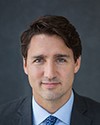Thank you very much.
I appreciate the invitation and welcome the opportunity.
I've prepared a background paper. I understand it has been distributed. In the next few minutes, I want to summarize some of the key points. I will devote my attention exclusively to the nuclear elements of the NATO strategic concept and posture, as did the paper I have submitted.
Though disagreements abound, we are still in a moment of some real opportunity for advancing nuclear disarmament. NATO's 2010 strategic concept partly reflects that increased international attention to and support for the pursuit of a world without nuclear weapons.
Paragraph 26, the central arms control paragraph, stands in sharp contrast to the 1999 strategic concept. The latter was effusive about nuclear weapons on European soil being “vital to the security of Europe”. It insisted that deployments in Europe “remain essential to preserve peace”, and that nuclear weapons in Europe were “an essential political and military link between European and North American members of the Alliance”.
None of that language is present in the 2010 strategic concept. It simply notes that NATO will retain “the full range of capabilities necessary to deter and defend”—but without explicitly insisting that nuclear capabilities be based in Europe.
There is, nevertheless, still reluctance to take action in support of the welcome change in rhetoric. Growing pressure to end European nuclear deployments is proving to be a politically vexing issue within NATO. But on one level, the issue should be straightforward. The nuclear non-proliferation treaty expressly prohibits, in articles I and II, the deployment of nuclear weapons in non-nuclear weapon states. The U.S. and NATO are currently alone in not complying with those two articles.
An estimated 200 B61 gravity bombs are currently deployed in five NATO countries. The justification is that it is an arrangement that goes back to before the treaty's 1970 entry into force, as did a similar Soviet Union-Warsaw Pact arrangement. It was tolerated in the Cold War context, but that tolerance is now wearing thin.
In the NPT review process, there are persistent calls for all nuclear weapon states to ensure that all their nuclear weapons are returned to and held within their own territories, that the capability for their rapid deployment to other states be eliminated, and that all nuclear training with non-nuclear weapon states be ended.
Germany has called for an end to nuclear deployments on its territory, partly out of concern for NPT compliance. The European nuclear deployments are now defended largely as symbols of political solidarity. Indeed, it is the conventional wisdom that the B61 bombs have no military utility.
In other words, the U.S. and all the current host states—Germany, Netherlands, Belgium, Italy, and Turkey—could comply with the treaty requirements without any adverse security consequences.
The European states that host the B61 are all facing decisions on replacing the aircraft that currently carry and deliver them—a series of individual national procurement decisions that could end the deployments by default. The Eurofighter, the likely replacement choice for Germany, does not currently have a nuclear-capable version. The Dutch, the Italians, and the Turks are considering the F-35.
In each case, adding a nuclear capability would add some $5 million to $10 million to the per unit cost. The Belgians are considering not acquiring a new fighter aircraft at all, thus ending their nuclear role.
The added financial costs for nuclear capability will be an issue in each of these countries, but even more so will be the political costs of an explicit decision to commit to a nuclear role for the next three to four decades that the new aircraft will be in service.
In the meantime, the U.S. is committed to upgrading the B61 warhead, including modifications to the tail assembly, in the interests of greater accuracy against hardened targets. If the B61's heightened accuracy were to be mated to new F-35 stealth fighter aircraft based in Europe, the result would be, from Russia's perspective, a significant escalation of the nuclear threat.
Even so, Russia does not justify its retention of non-strategic nuclear weapons primarily as a response to U.S. nuclear bombs in Europe. NATO's massive conventional superiority is the greater concern. Russia accounts for less than 6% of world military spending, while NATO states collectively account for about 60%. As long as Russia regards this overwhelming conventional force as a serious challenge to its regional interests, it will resist the final elimination of its tactical nuclear weapons. Two decades have now passed since the end of the Cold War, and it is past time for the mutual suspicions between NATO and Russia to be challenged and seriously addressed.
Notably, through the pursuit of a genuine mutual security community within the OSCE region, in testimony before this committee a few weeks ago, the Department of National Defence ADM for policy said that NATO has consistently told Russia, “This alliance is not about you. It's not against you.” It was an important point about pursuing mutual security interests, but the defence minister of Lithuania told this committee only a week or two later that it's absolutely about Russia. Lithuania and the Baltic and East European states seek collective defence against Russia as the priority NATO mission: “Our main concern,” said the minister, “is Russia's intention to dominate the region and the Baltic states.”
So NATO has not sent a consistent message to Russia, and neither have NATO's actions been unfailingly consistent with mutual security objectives. B61 modernization is one example, and ballistic missile defence is another. It is true that Russia is given to exaggerated claims about the likely impact of European missile defence on its security and the reliability of its deterrence, but it is also obvious that missile defence is a major drag on efforts to reset the overall Russia-NATO relationship. Some laud BMD as an element of smart defence, as did the Lithuanian minister, but there is a significant expert community that asks what is smart about a military deployment that relies on unproven and still hotly debated technology, that is deployed against an uncertain threat, and that undermines a key NATO arms control objective, namely the elimination of sub-strategic forces?
All of this suggests some constructive policy directions for Canada. I won't list all of the ones that I have suggested in the paper, but perhaps we could talk about those during the discussion period.
Thank you.





